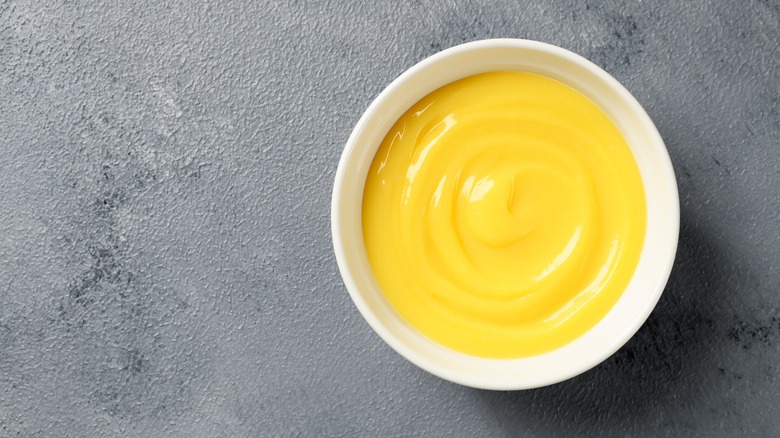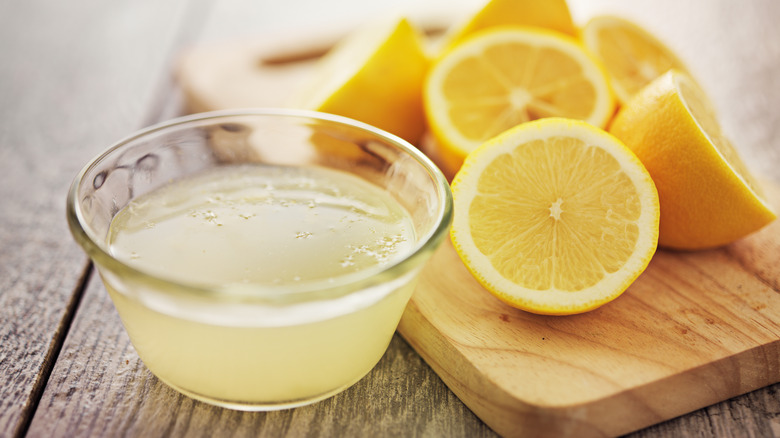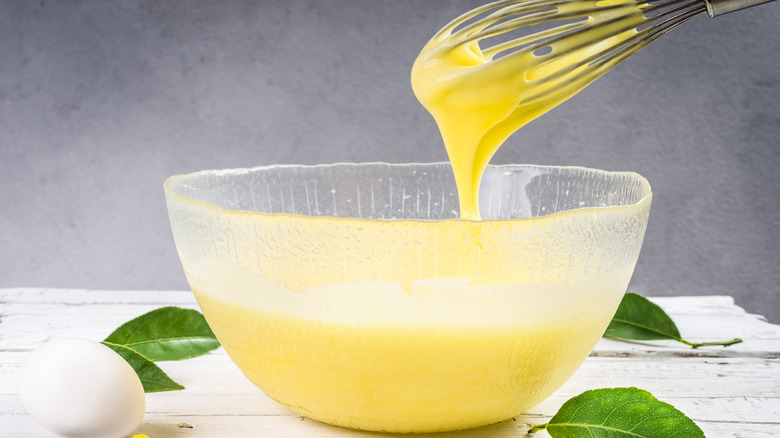What To Know Before Making The Best Lemon Cream You've Ever Had
When you're craving a fresh and fruity dessert, lemon cream may just be exactly what you need. The creamy, velvety, custard-like concoction can be eaten on its own like pudding, used as a cupcake or cake frosting, piled into a trifle, or poured into a tart crust.
It's important to note what lemon cream is and how it differs from lemon curd since both are made from lemon juice, butter, eggs, and sugar; some lemon cream recipes also include gelatine, salt, and olive oil. The difference is in how they are cooked: Lemon curd is cooked all at once in the same pan, while lemon cream cooks everything but the butter, then blends the dairy product in later. This creates a difference in texture, with lemon cream being, as the name suggests, the creamier of the two.
If you're planning to make lemon cream in your home kitchen, there are steps to take before you start that can ensure the dessert comes out the way you intend. First and foremost, use high-quality ingredients. Lemon cream is comprised of only a few ingredients, so don't skimp on quality. Additionally, make sure you have the right kitchen equipment on hand. Lemon cream starts in a stovetop double boiler where it's cooked to a specific temperature, transferred to a bowl, thoroughly cooled, and mixed. You'll need to have a candy thermometer handy. For mixing in the butter, go manual with a whisk, or opt for the easier mixer, blender or food processor.
Choose the best lemons
Lemon cream is all about the lemons, so pay attention to what you're buying. Check the color of the fruit. Unripe lemons can have a tinge of green on the outer skin. Fully ripe lemons will be a more vibrant yellow. Pale skin can indicate an older lemon that's drying out. The weight can also determine how juicy the lemon is, so you don't need to focus on size as much as weight. Find a scale in the produce section, because the heaviest fruits are often the juiciest.
Some lemon cream recipes call for both lemon juice and zest, but the perfect lemon for juice is opposite from the ideal for zest when it comes to the lemon's skin. Juicier lemons tend to have thin, smooth skin. Zest, which comes in many shapes and sizes, is best made from larger lemons with thicker skin. When a recipe calls for both, you may want to grab lemons of each kind.
Eggs, butter, and sugar are also essential ingredients in lemon cream. Some recipes call for only egg yolks, while others include the entire egg. Larger eggs are generally recommended to add structure to the spread. When adding in some sweetness, granulated white sugar is most often recommended in recipes. Higher-quality butter can contribute additonal richness, too. And if you follow a recipe that uses olive oil, you might opt for one that contains Meyer lemons.
Focus on temperature and mixing
The perfect lemon cream requires careful attention to the cream's temperature at different stages in the cooking process, so you'll want to have a candy thermometer handy before you get started. While on the stovetop, the ideal temperature for the mix to reach is 180 degrees Fahrenheit. Once the cream reaches that heat, it should be taken off the heat. The importance of temperature comes into play once more when the cream comes off the heat — it needs to cool way down before the butter is added. Use your thermometer to check that the temperature has dropped to about 130 degrees Fahrenheit.
Incorporating butter or oil into the cooled mixture needs a lot of vigorous mixing. You can use a whisk to better monitor and control the cream's consistency; or, choose to make mixing a little easier with the help of a blender, food processor, or mixer.
The secret to making luscious, velvety lemon cream starts with having everything you'll need — ingredients and tools — before you start zesting and squeezing.


